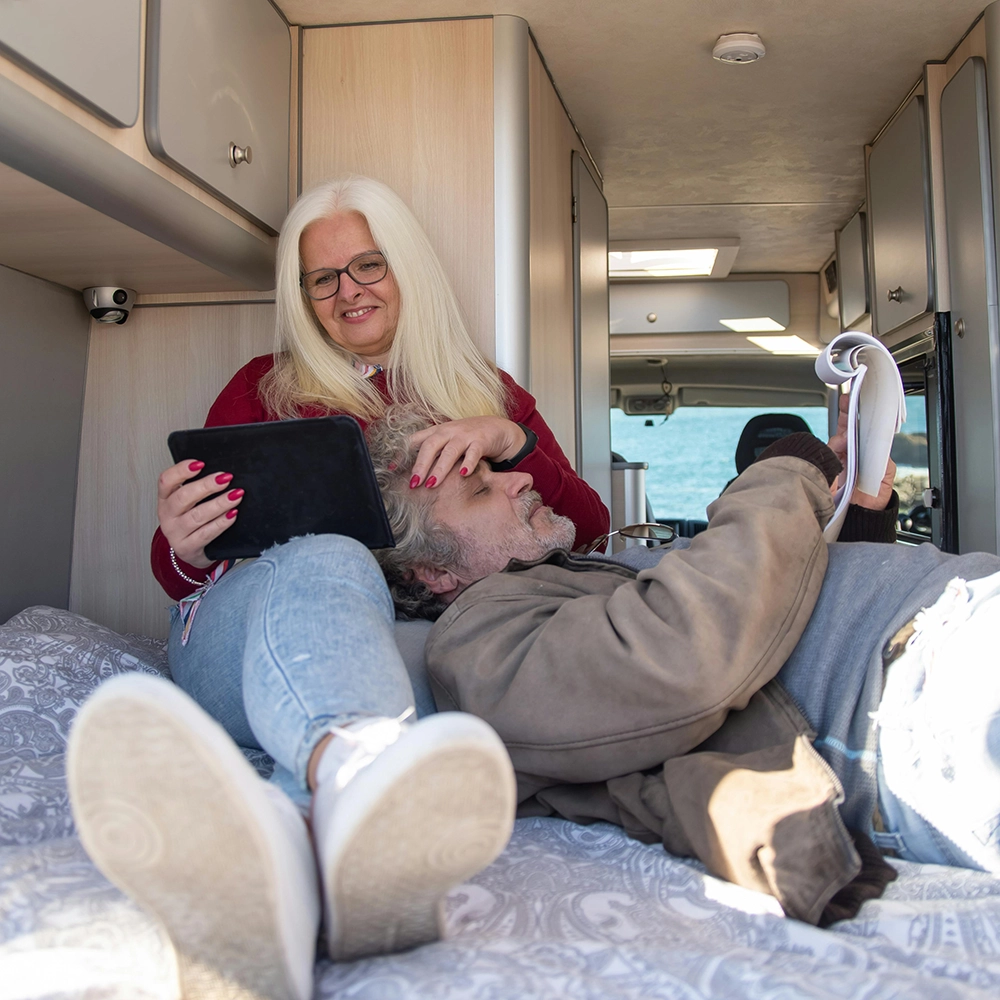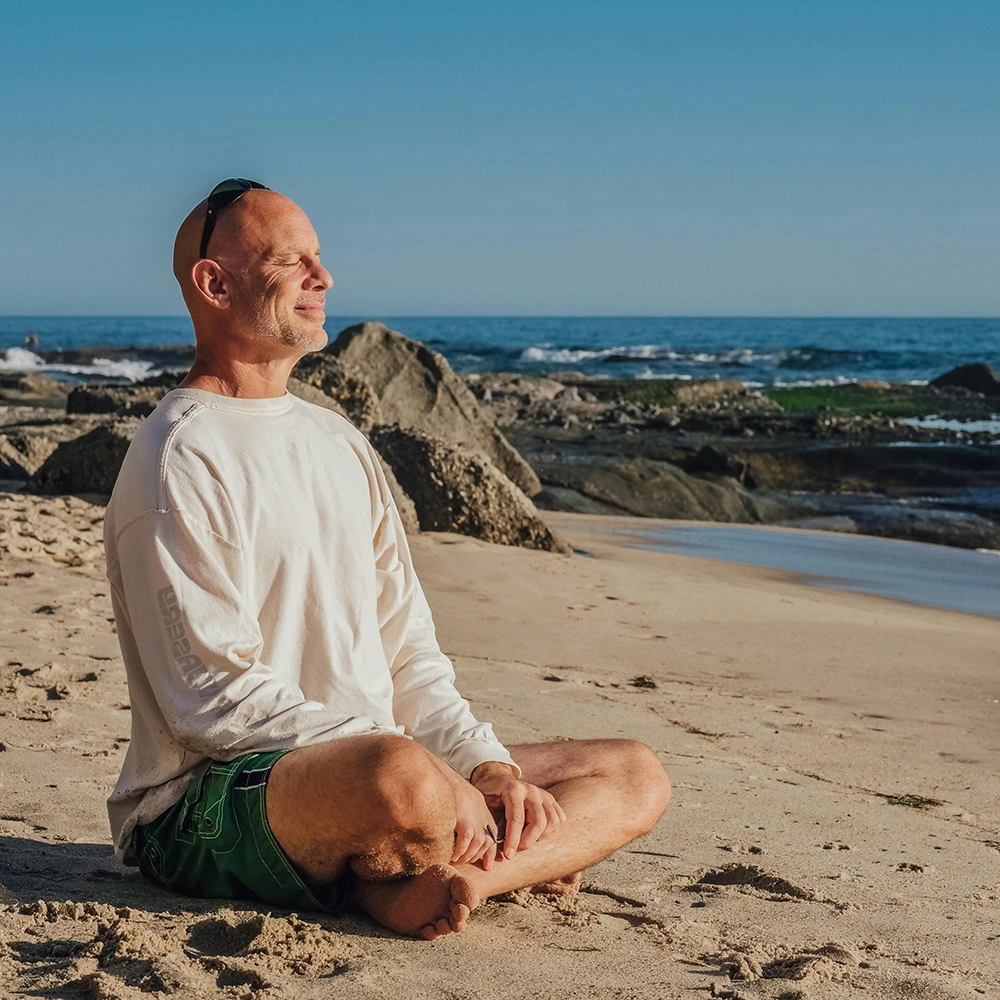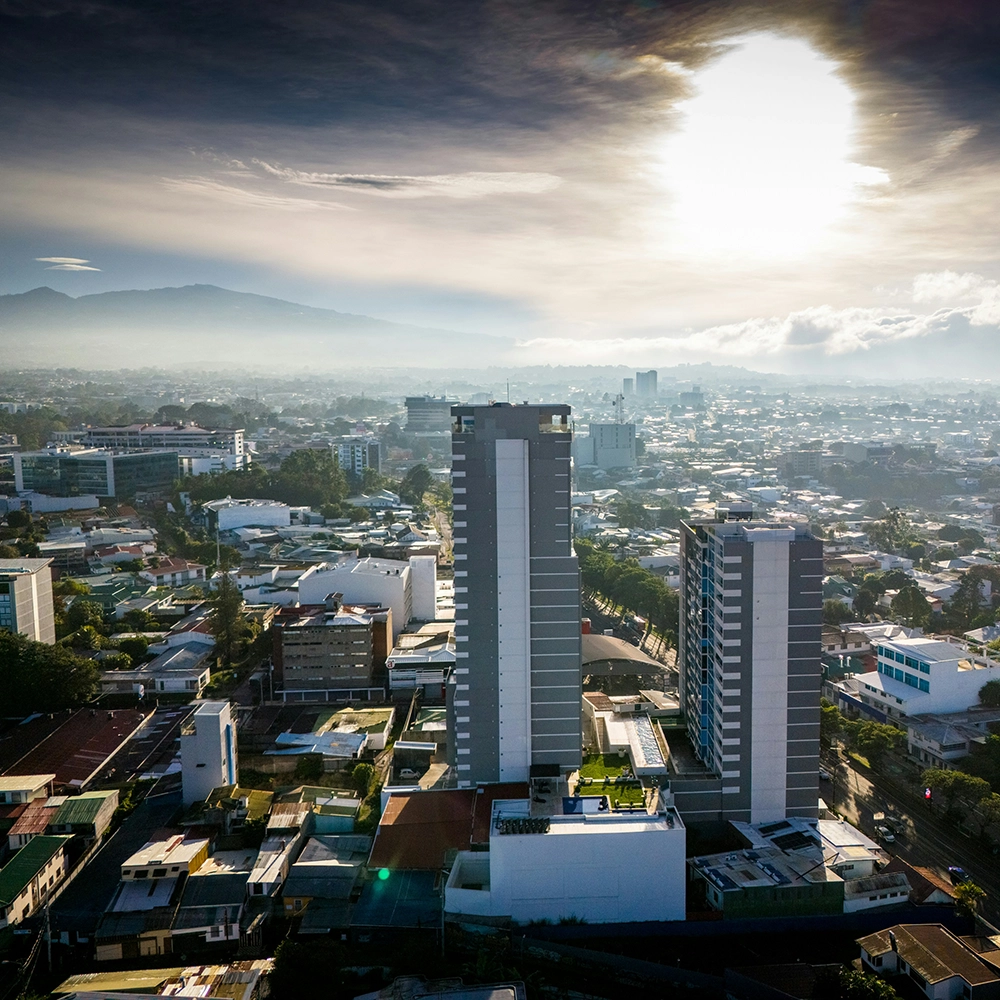A few years ago, we started tracking how baby boomers, born between 1946 and 1964, travel. And while baby boomer travel trends are constantly changing, this generation is also changing how travel fits into their everyday lives. Specifically, they’re making sure travel — staying an active citizen of the world — continues well into retirement.
Traveling with family remains a high priority for people, particularly if they’re grandparents. And so many baby boomers often balance multigenerational vacations or skip-generation trips with getaways of their own. Taking regular vacations is common practice.
Alternatively, we’re seeing more people late in their careers exploring golden gap years and planning what life looks like if they retire abroad.
These are committed travelers, and you can be one, too. Here’s how.
What Is a Golden Gap Year?
Travelers aged 50 and up, which includes some of Gen X, have had different work experiences than their parents’ generation. It doesn’t come as a surprise then that they also see retirement differently.
Whether out of financial necessity, because they finally have the time to do what they want, or simply because they like to stay busy, baby boomers rarely see retirement as an end. It’s the start of a new — and still active — phase in their lives.
Travel is an exciting way to transition into that phase.
We know about traditional gap years, typically a period between high school and college when young travelers “find themselves.” We also know about sabbaticals or adult gap years, when people in the middle of their careers reevaluate priorities and reenergize their goals.
What we’re seeing more often now are golden gap years.
Like sabbaticals, golden gap years are ideal for refreshing yourself and focusing on your next steps. For baby boomers, this could be figuring out what life looks like as a recent empty nester or a new retiree. It could also be a time for self-reflection to decide on a second career or a side hustle.
Much like gap years undertaken by younger generations, travel is a key component. Golden gap year travel gives the person new opportunities to explore, an eye-opening perspective via a change of scenery, and a chance to test new interests.
How to Take a Golden Gap Year
Gap years are perfect for making transitions. Some people have described golden gap years as a “reboot.” It’s a way to jumpstart that next phase in life on your own terms.
1. Set a goal.
What do you want to get out of your golden gap year? Do you want to learn a new language or skill? Find new ways to stay physically and mentally active? Break the stereotype that getting older means getting put out to pasture and instead do things that feel adventurous and maybe a bit outside your comfort zone?
Do you want to investigate a new career path or find a side hustle to supplement your retirement income? Do you simply want space from everyday life so that you can think clearly and figure out what your next move is?
There is no right or wrong answer to “Why do you want to travel?” Just be clear and honest with yourself before moving to the next step.
2. Decide who you’re going to travel with.
More and more people are picking solo travel so they can see the world at their own pace and pursue their own passions. But that isn’t a requirement. Decide if you want to go alone or take a friend or partner with you.
Remember that the other person doesn’t have to travel with you 24/7/365. You might enjoy having a companion with you only for certain stretches of your trip.
3. Create a budget.
Especially if you’re on a fixed income, it should be fairly easy to determine how much you can afford to spend on travel. When you’re working on a budget for your golden gap year, factor in:
- the cost of living at your destination (you might end up picking a destination based on what you can afford)
- transportation both while you travel and any trips to visit home,
- activities like tours, admission fees, and retreat or development opportunities if that’s part of your goal
- an emergency fund, travel insurance, and healthcare to help keep you safe and healthy in the face of unexpected events
- the cost of maintaining your home even while you’re away
4. Simplify responsibilities at home.
This can mean a lot of different things, depending on your everyday living situation. For some, it could mean downsizing your home, possibly selling it and putting your most treasured belongings in storage. For others, it’s simply canceling your Netflix and Wi-Fi subscriptions while you’re away.
The simpler you can make things at home, the less you’ll have to worry about, and the more you’ll be able to enjoy your golden gap year.
5. Get visas and travel documentation in order.
Once you know where you’ll be traveling — and it could be multiple destinations — you need to get your paperwork in order. What kind of visa, if you even need one, you should get mostly depends on your destination, how long you’ll be staying there, and whether you plan to work.
Don’t forget to look into eVisas, which can be easier to obtain than traditional visas, especially if your primary purpose for travel is tourism.
If you expect to work on the road as a digital nomad, get a local job, or even just have a side hustle, you may need a work visa. Some countries have created digital nomad visas in the last few years to make this easier.
While a tourist visa is usually sufficient for shorter trips, you might consider a Golden Visa if you’re thinking about turning your gap year into a lifetime commitment.
How to Retire Abroad
A golden gap year has an end, even if it’s a fluid timeline. But if you’re ready to make a favorite destination your full-time home base, you might be ready to retire abroad.
What does retiring overseas look like? You likely don’t have any obligations keeping you rooted to one spot — no on-site job, no family home or children to care for. You might be interested in downsizing or selling your home. You could decide that living on a cruise ship full-time sounds like the life or you want a second home abroad.
There’s no one best way to travel when retired.
Depending on where you choose to relocate, you might be able to stretch your money farther. Some of the best destinations to retire have a lower cost of living than what you might find in the United States. We see this in places like Mexico.
Alternatively, if you’ve already decided you want to spend much of your retirement traveling Europe, for example, having a home base on the continent can cut down on transportation expenses. A weekend in Italy is a less time- and money-consuming getaway if you’re starting your journey in Portugal.
When you have more flexibility in where you live and how much time you can devote to leisure activities, making travel your primary lifestyle might be more realistic than you originally thought.
The Golden Rules of Retirement Travel
Whether you’re on a series of short jaunts or staying on the road for months at a time, these “rules” for retirement travel can guide you to amazing experiences.
1. Make health and safety a priority.
Talk with your doctor about any health concerns or pre-existing conditions and how you can manage them during your travels. Ask about telehealth appointment options in case you need to see the doctor again before you get home.
If you take prescription medications, make sure you have enough for your entire trip, plus a bit more in case your return is delayed. Especially if you’re traveling internationally, check about documentation requirements for medications and medical devices. Some countries are very strict about what is permitted.
Purchase travel insurance with medical coverage before your trip. This can cover expenses if you get sick or hurt during your trip. Most domestic healthcare, including Medicare and Medicaid, does not follow you overseas. Without reliable travel medical insurance, treatment and care would likely need to be paid out of pocket, which can get quite expensive.
If your golden gap “year” is open ended, you plan to be gone for more than a year, or if you decide to make the leap into the expatriate life, you’ll need something more long term than travel medical insurance. Try Seven Corners Expat & Nomad Insurance.
This plan is designed specifically for U.S. residents who plan to live and travel abroad for more than a year. In addition to emergency medical benefits and medical evacuation like what you find in travel medical plans, Expat & Nomad Insurance also covers routine health and dental care.
If you’re unsure which kind of medical coverage is right for your situation, talk to one of our licensed agents, who will help you find the best plan.
2. Treat your trip like a marathon, not a sprint.
You’re retired! There’s no boss waiting for you to get back to the office, no PTO days to count. You can afford to take your time.
Spread your most demanding activities out on your itinerary and build in some nothingness in between. It could be an afternoon or a full day where you plan to refresh yourself and get ready for the next wave of activity.
The goal is to not wear yourself out at the beginning of the trip. Pace yourself over the long haul so that you can enjoy every minute instead of wincing at sore feet for half the trip.
To stay healthy, prioritize rest as much as you do activity.
3. Choose comfort.
Comfort means something different to everyone. It could be a luxurious hotel or a basic but clean motel. It could be a train ride through the Alps or a cruise in the Caribbean.
Instead of caving to the pressures of “best of” lists or what you “should” do when you travel, prioritize the accommodations, transportation, destinations, and foods that keep you comfortable and meet your needs.
4. Manage your budget thoughtfully.
Simply put, you need a budget or you’ll run out of money before your trip ends. That doesn’t necessarily mean you have to count every penny and only eat peanut butter sandwiches to make your trip last.
What it does mean is being intentional with where your money goes. If your idea of a comfortable trip is a Caribbean cruise (see #3), go ahead and book it! Just be thoughtful about the excursions, add-ons, and extras you tack onto your bill.
Will getting the drinks package be worth the money to you? Can you save some money by exploring a port on your own versus taking the snorkeling tour, especially if you don't love to swim?
Just because they offer it to you, doesn’t mean you have to buy it. Money spent on something you love is money well-spent. But even $1 for something you don’t truly want is too much.
5. Pack light.
Even if you’re going to be on the road for a month, you don’t need a month’s worth of clothing. Packing light has several advantages.
You can afford to be spontaneous. Instead of being weighed down by luggage and trying to collect your belongings in a hurry, you can get up and go when the opportunity arises.
You aren’t wrestling with heavy bags. Nothing saps your energy quicker than having to haul an oversized suitcase stuffed with things you probably won’t even use. Do your muscles a favor and pack light.
You're less likely to misplace things. The more things you have, the easier it is to lose track of them. All that shuffling around, trying to make everything fit in our luggage (because clothes never pack as tightly again after you leave home) is asking for trouble.
You have room for souvenirs. Even if you aren’t into buying knickknacks, you’ll probably find something you want to bring home. It could be a book, the perfect handmade scarf, or a piece of art that perfectly captures the vibe of your destination. Save space for new treasures.
6. Keep an open mind.
This applies before and during your travels. Be flexible with your timing and destinations. Not only can flexibility save you money, but you might uncover some unexpectedly delightful places you would have missed otherwise.
Instead of saying, “This is where we always go” or “Linda’s hairdresser’s cousin said we have to try this restaurant in Cabo,” keep an open mind and discover new possibilities.
It also helps to keep an open mind about what you experience. If you’re lucky, you’re going to encounter opportunities that get you outside your comfort zone. Instead of passing judgement too quickly or immediately running away from the uncomfortable, try to embrace the differences.
7. Embrace technology when it makes sense.
Travel apps are a dime a dozen these days. From pre-programmed packing lists and booking sites to interactive maps and museum guides (so you can skip those clunky audio wands), the tech on your phone can help you save money and make travel easier.
Not all of them are gems, though. Check out our list of some of the best travel apps to get started.
AI can help spark ideas for what to do when you travel. When we used AI to plan a trip to Charleston, South Carolina, we found that not all the information was 100% accurate. However, it was a great tool for sparking creativity and starting a wish list.
Just because you’re embracing technology, though, that doesn’t mean you have to be tethered to it. Don’t be afraid to disconnect. A digital detox can be incredibly refreshing, especially if you’re a recent retiree and want to break all ties to email for a while.
8. Dive into your destination.
Make the most of your trip by really immersing yourself in your destination’s culture. Eat the local food, do a homestay, tour the historical sites, take a class to learn how to make that random village’s world-famous cheese.
You don’t have to skip the classic tourist sites. A trip to Peru without seeing Machu Picchu would be a disappointment to most people. Just don’t limit yourself to the tourist path only.
Branch out into all the corners and nooks and crannies to get a full, authentic experience.
9. Learn the language.
Having a few keywords and phrases in your pocket can help you navigate common situations. “Please” and “excuse me” go a long way. So does “thank you.”
Knowing a bit of the local lingo not only makes it easier for you to communicate, but it can also smooth over awkward situations. When people see you making an effort to speak to them in their language, they tend to be more gracious.
You don’t have to be fluent. Try these tips for learning the basics of another language.
10. Don’t be afraid to change your mind.
You struck out on a long journey. Maybe you thought a year on the road was the best idea ever. Now, a month in, you’re tired, your budget isn’t stretching as far as you thought it would, your digestive system is unhappy with all the unusual food, and it’s just not as fun as you imagined it would be.
You can change your mind. And when you do, hopefully you have travel insurance with Interruption for Any Reason (IFAR) coverage so that you can recover the unused portions of your insured trip costs.
Best Places to Retire Overseas
Ideally, you’ve thought about this long before collecting your watch and calling it quits. Planning to retire abroad starts early so that you know how much money you’ll need, what the tax implications are, and all the other logistical tasks like obtaining visas and health insurance.
Before you sell your house and settle permanently in another country — or even another city — we recommend visiting there several times.
Go ahead and be a tourist for some of the time, but also try to live like a local as much as possible. Sometimes the vacation places we love the most aren’t as grand when it comes time to live there 24/7.
Spain
Spain rises to the top of many lists when people think about retiring overseas. For starters, it has a great climate, especially along the coast.
Spain is also relatively inexpensive, so long as you avoid the main tourist areas like Barcelona and Madrid. Like most major cities, they have a higher cost of living. Instead, branch out to smaller cities like Valencia in the east or Almuñécar in the south.
Logistically, Spain isn’t the easiest European country to settle in, but it also isn’t the most difficult. It was one of the first countries to offer a digital nomad visa, which is worth looking into if you’re semi-retired or thinking about having a side hustle to supplement your income.
The Ambroz Valley, a mountainous region west of Madrid, is offering grants to digital nomads who agree to move to the rural area for at least two years.
Expats are required to have private health insurance for at least the first five years of their stay in Spain. That means that, just like when you’re visiting Spain as a tourist, you can’t expect the universal healthcare system to provide you with free medical treatment.
Portugal
For some reason, Portugal still has a bit of a hidden-gem reputation, often getting overlooked in favor of neighboring Spain. However, many who find Spain overcrowded or too expensive discover that Portugal avoids those pitfalls.
With a similar coastal climate, you’re unlikely to experience extremes in temperatures. This is perfect for anyone looking to buck the snowbird trend. Consider cities like Lagos and Porto.
The capital, Lisbon, is also popular for expats, especially if you want easy access to an airport so you can jet set to destinations farther afield.
You have a few visa options. One is a D7 Passive Income Visa, perfect for digital nomads. Staying in Portugal on a Passive Income Visa typically works in your favor in terms of taxes (if you’re a U.S. citizen) and also comes with access to the healthcare system, along with other benefits.
Portugal also has a Golden Visa. Unlike other European countries that only issue a Golden Visa if you invest a certain amount of money in the local real estate, Portugal requires you to invest in certain qualifying funds. This is an attempt to counteract the rising cost of real estate due to tourism as well as support projects in agriculture and education.
Greece
If you’re looking for a country with a large expatriate community and excellent (read: warm) weather, look no farther than Greece.
The islands are always a popular pick, but that can sometimes make them more expensive and crowded. If that doesn’t appeal to you, don’t rule out the smaller, lesser-known islands too quickly. Check out Skyros and Corfu.
The biggest upside of avoiding the most popular islands is a lower cost of living. Of all the places on our list, Greece is generally the most expensive, even for a European destination.
If you’re truly in love to Greece and have the income to make it happen, Greece does offer a Golden Visa. To qualify, you must invest about $270,000 USD or more in local real estate. After five years — you have to renew your visa annually — you can apply for citizenship. If you make it that far, we’d say you’re committed.
Panama
Moving to Panama is like taking the snowbird lifestyle to the next level. Among the advantages of retiring to this Latin American country is that it’s close to the U.S. (visits to see family are quick and easy), it’s affordable, and it has a great mix of international flavor with a strong expat community.
Panama City is the largest city, but with a population of less than 500,000 people, it’s not as overwhelming as some other capital cities around the world. If you like some metropolitan flavor, this is your best bet.
If you’re in the market for smaller towns, beachside villages, or mountain vistas, you’ll find those in Panama, too.
El Valle de Antón is a town that actually sits in the crater of an extinct volcano and, thanks to its higher elevation, offers nature plus cooler temperatures. For waves and sunshine, try places like Coronado and Boca Chica.
Panama’s currency, the balboa, is tied to the U.S. dollar, which makes banking and tracking your finances easier than in some other destinations. To get a Panama Pensionado visa, you just have to prove that you have a lifetime income of $1,000 per month.
Costa Rica
Like Panama, Costa Rica is a Latin American country with a strong expatriate community. If you like the idea of living abroad but still want the occasional taste of the familiar, it’s nice to have fellow “outsiders” around.
While inexpensive compared to some of the European destinations on our list, Costa Rica isn’t the cheapest place in Central America. That being said, the cost of living is still relatively moderate depending on where you’re coming from. Most reports say a retired couple can live quite comfortably in Costa Rica for around $3,000 USD per month.
You’ll find plenty to do in Costa Rica. It’s one of the most eco-friendly destinations in the world, so if you like the idea of hiking, spending time in nature, or just living sustainably, this could be the retirement spot for you. If you want to live the chill pura vida lifestyle, you’ll love the coastal areas and laid-back towns.
To get a Pensioner Visa for Costa Rica, you need to prove that you have a minimum of $1,000 monthly income as well as make monthly contributions to the national healthcare system. You then have access to the same healthcare as other residents. If you still love la pura vida after three years, you can apply for permanent citizenship.
Best Travel Insurance for Retirees
No matter where you end up, remember that health insurance is vital.
Depending on your trip and how long you’ll be gone, you have a few options: Seven Corners Travel Medical Insurance (ideal for trips of a year or less) or Seven Corners Expat & Nomad Insurance (great for trips of longer than a year, providing coverage for routine as well as emergency care).
Both plans have a range of options, allowing you to choose your deductible and match the coverage you need with your budget.
To find the right Seven Corners travel insurance plan, visit SevenCorners.com or talk with one of our licensed agents.









